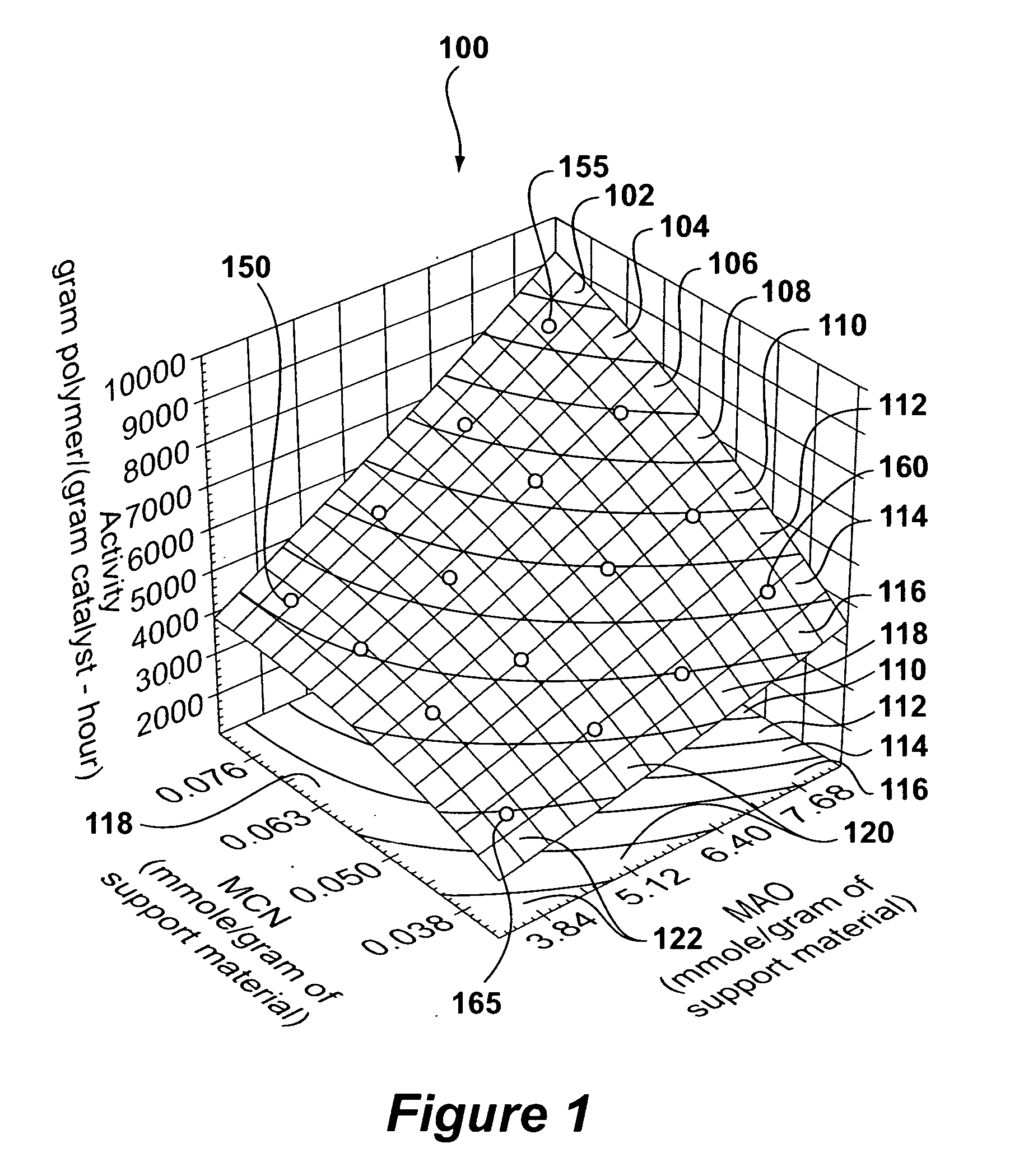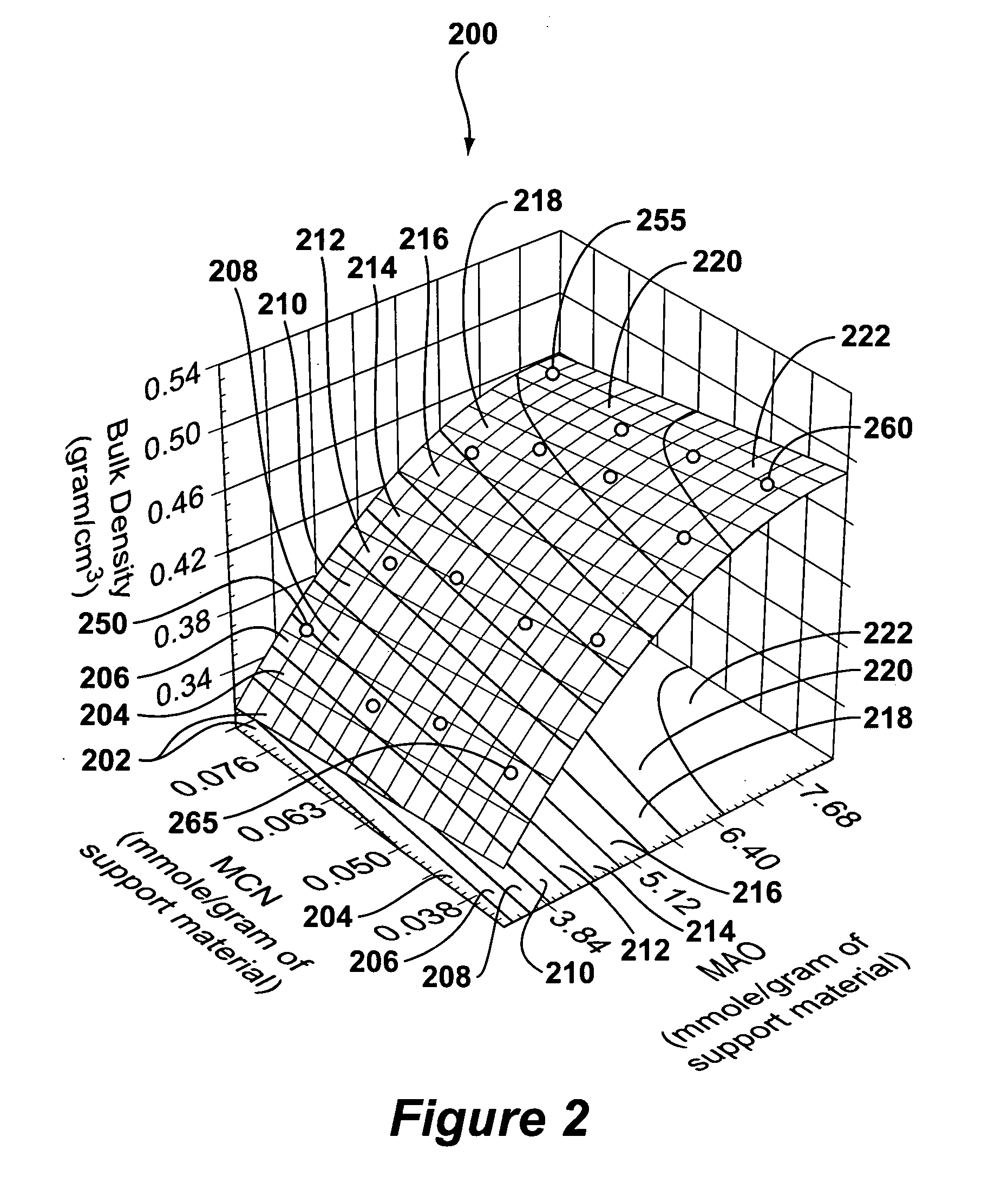Polymerization process using metallocene catalyst systems
a technology of metallocene catalyst and polymerization process, which is applied in the direction of catalyst activation/preparation, physical/chemical process catalyst, chemical/physical process, etc., can solve the problems of increasing cost and complexity of the polymerization process, affecting the performance of the reactor, etc., and achieving optimized metal loading and activator concentration , the effect of improving operability and productivity
- Summary
- Abstract
- Description
- Claims
- Application Information
AI Technical Summary
Benefits of technology
Problems solved by technology
Method used
Image
Examples
examples
[0282] In order to provide a better understanding of the present invention, including representative advantages thereof, the following examples of some exemplary embodiments are offered. In no way should such examples be read to limit the scope of the invention.
[0283] The catalyst composition and the polymer produced in the Examples were tested and synthesized as follows: A 2 liter autoclave reactor under a nitrogen purge was charged with 0.16 mmoles triethylaluminum (TEAL), followed by 60 cubic centimeters (cc) of 1-hexene comonomer and 800 cc of isobutane diluent. The contents of the reactor were heated to 80° C., after which 100 mg of each of the supported polymerization catalysts prepared in Examples 1 to 27 (the preparation of which is described further below) were each separately polymerized as follows: each polymerization catalyst was introduced concurrently with ethylene into the reactor to make up a total reactor pressure of 325 psig (2,240 kPa). The reactor temperature wa...
example set a
Preparation of Supported Metallocene Catalyst
example 1
[0285] In a 125 ml glass vial equipped with a stirring bar and under anaerobic conditions was added 20 ml of toluene, and 6.64 ml of a 30 wt % methylaluminoxane (MAO) solution (1.85 gram MAO, 6.40 mmol / gram silica) (available from Albemarle Corporation of Baton Rouge, La.). While stirring, 0.082 grams (0.038 mmol / gram silica) of bis(1,3-methyl-n-butylcyclopentadienyl) zirconium difluoride metallocene dissolved in 2 ml of toluene were added to the glass vial. The mixture was stirred at room temperature (25° C.) for 15 minutes, after which 5 grams of ES-757 silica (dehydrated at 600° C.) (available from Ineos Silicas of Warrington, UK), was added to the solution. The ES-757 silica exhibits the following physical properties:
Physical PropertiesES-757Surface Area (M2 / gram)316Pore Volume (cm3 / gram)1.5910th % μ950th % μ2590th % μ45
The mixture was then stirred for 15 minutes after which the catalyst was dried at 75° C. until the solid was free flowing.
PUM
| Property | Measurement | Unit |
|---|---|---|
| Length | aaaaa | aaaaa |
| Fraction | aaaaa | aaaaa |
| Percent by mass | aaaaa | aaaaa |
Abstract
Description
Claims
Application Information
 Login to View More
Login to View More - R&D
- Intellectual Property
- Life Sciences
- Materials
- Tech Scout
- Unparalleled Data Quality
- Higher Quality Content
- 60% Fewer Hallucinations
Browse by: Latest US Patents, China's latest patents, Technical Efficacy Thesaurus, Application Domain, Technology Topic, Popular Technical Reports.
© 2025 PatSnap. All rights reserved.Legal|Privacy policy|Modern Slavery Act Transparency Statement|Sitemap|About US| Contact US: help@patsnap.com



